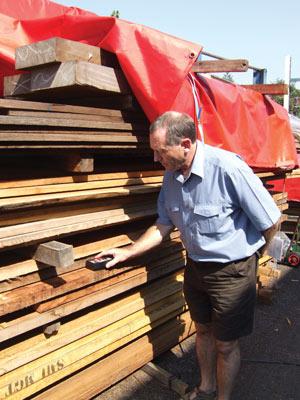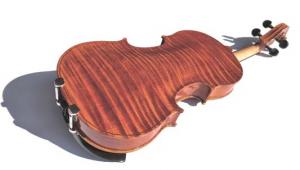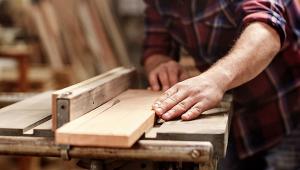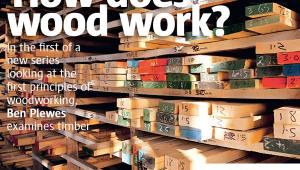The importance of measuring moisture content

I have some oak planks stored in the ventilated hayloft over my workshop; some have been air-drying for over ten years others were kiln dried but have spent the last year or so in the loft. Now they all have a similar moisture content, ranging from 16-18% despite the fact it’s summer. If I wanted to use this timber for anything other than an outdoor project, I would need to bring it into the house for several weeks. If wood has been dried properly it will soon acclimatise once stored indoors; I usually allow a couple of weeks.
Wet Timber Facts
•As a rough guide you will get between 1 and 2% shrinkage for every 5% change in moisture content.
•In the worst case you could get 4mm shrinkage on a 100mm wide board if it went from 20% to 10% MC. Multiply that up to a 2ft wide board and you have an inch of shrinkage!
•If two pieces of timber with a 4% difference in moisture content are glued together, the joint strength can be reduced by as much as 50%.
Conversely, I’ve just bought some oak planks from a particularly good local timber merchant, Eaton Timber of Bishops Castle, Shropshire. They store the timber in temperature and humidity controlled store rooms and all their timber measures 8-10%MC. I’m going to use the planks to make some ledged doors for a barn conversion and this timber is slightly too dry. I’m looking for 12-14%, so again I’m going to store it indoors for a couple of weeks to let it acclimatise.
Last year I bought some oak from a timber merchant I hadn’t dealt with before because they had some very long lengths which I couldn’t get anywhere else. When the wood arrived, the MC was extremely variable at 8-24%. This can sometimes happen if the wood has been stored outside waiting to be delivered, so I wasn’t too worried. I stored the timber inside and after four weeks the MC had hardly changed, which showed that this wood had been very badly kilned. I was desperate at the time and used it, which was a mistake. Despite the fact that I changed the design to compensate for the variable MC, I had to go back and re-make a joint that had opened up. I should have rejected the whole load.
Warping
• Spring, when a board curves along its edge
• Bowing, when a board curves along its length
• Cupping, when a board curves across its width
• Twisting, when a board twists along its length, looking a bit like a propeller
Splitting
• Splits appear normally at the end of the boards and go right through from one side of the timber to the other.
• Checks are cracks in the face of the board which don’t go right through to the other side.
• Honeycombing is when cracks appear inside the timber and only become visible once it is machined.
Case-hardening
• This is caused by the timber being dried too quickly. The outside of the board dries, leaving the core of the timber still wet. This creates internal stresses in the timber causing honeycombing. Case-hardened timber can be dangerous to machine.
Removing moisture from timber in order to make it useable is usually done by air drying or kiln drying. Sometimes a combination of initial air drying followed by kiln drying is used, particularly on larger section stock.
The cost per cubic foot of thick section hardwoods can be more than the cost of thinner section stock, because of the increased costs of drying thicker stock. Conversely thin section softwood usually costs more proportionally than thicker section stock because drying costs are small and the machining costs become more of a factor.
| 15-20% MC | External joinery, windows, structural timber |
| 10-15% MC | Internal joinery, furniture |
| 8-10% MC | Internal joinery in rooms which are continuously heated |
- Log in or register to post comments








